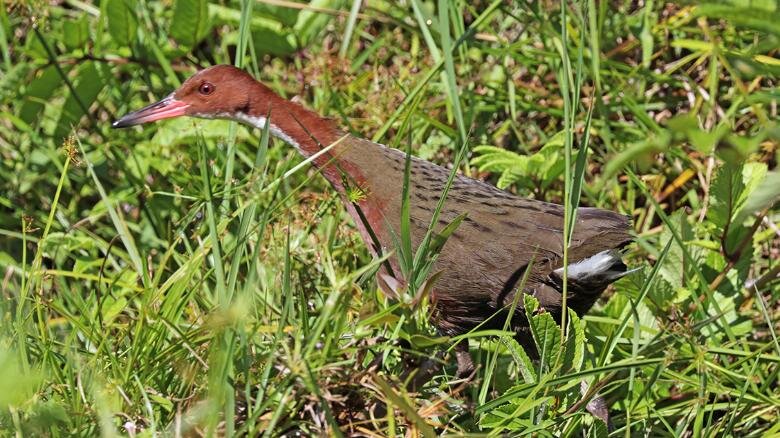White-Throated Rail | 11 May 2019
- The white-throated rail (Dryolimnas cuvieri) or Cuvier's rail is a species of bird in the family Rallidae. It is found in Comoros, Madagascar, Mayotte, and Seychelles.

- A flightless subspecies, Aldabra rail, inhabits Aldabra, while another Assumption rail from Assumption went extinct in the early 20th century due to introduced predators.
- It is now the last living member of the genus Dryolimnas and believed to be the last flightless bird in the Indian Ocean.
- Its natural habitats are subtropical or tropical moist lowland forest and subtropical or tropical mangrove forest.
- It has a least concerned status in IUCN Red List.
History of Evolution
- According to research, it is found that white-throated rail came back after extinction, through a process called “iterative evolution”. This is the first time it has been seen in rails, and one of the most significant seen birds.
- On two separate occasions tens of thousands of years apart, the species of rail was able to colonise called Aldabra. In both cases it eventually became flightless, and those birds from the latter time can still be found on the island now.
Iterative evolution happens when the same or similar structures evolve out of the same common ancestor, but at different times. It means that the animal actually comes about twice over, completely separately.
- The rail's return to Aldabra is not the only time in its lineage that it has escaped extinction.
- The parent species of the rail, indigenous to Madagascar, would frequently see its population explode, forcing the birds to migrate in great numbers from the island off the coast of East Africa.
- Many of those that flew north or south drowned in the Indian Ocean, and those that went west landed in Africa, where they were eaten by predators. But the lucky few who went east ended up on islands including Mauritius, Réunion and Aldabra.
- The rails on Aldabra lost the ability to fly over time, because of the lack of predators made it unnecessary, just as the dodo of Mauritius did.
- Unfortunately, that gave them no means of escape when the island was submerged and all its flora and fauna were wiped out.
- But unlike the dodo, which became extinct in the 17th century, the white-throated rail was resurrected to tell the tale once the island re-emerged and birds started migrating to the destination again.
- Researchers found similar fossils from before and after that event, showing that the chicken-sized bird re-appeared when sea levels fell again a few thousand years later, re-colonized the island and again lost the ability to fly.
- Aldabra, which has the oldest palaeontological record of any oceanic island within the Indian Ocean region, the fossil evidence available demonstrates the effects of changing sea levels on extinction and recolonization events.
- Fossil evidence presented here is unique for rails and epitomizes the ability of these birds to successfully colonize isolated islands and evolve flightlessness on multiple occasions.
